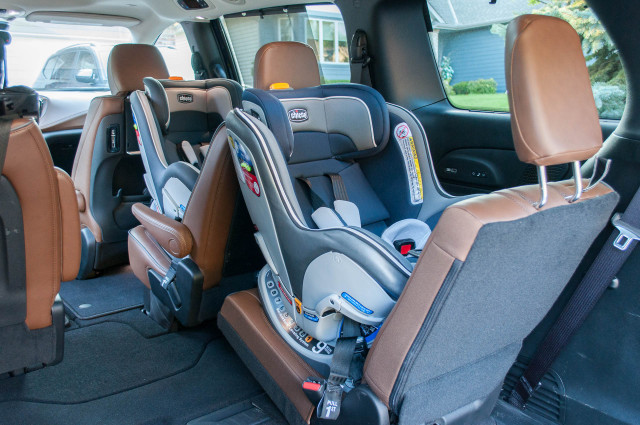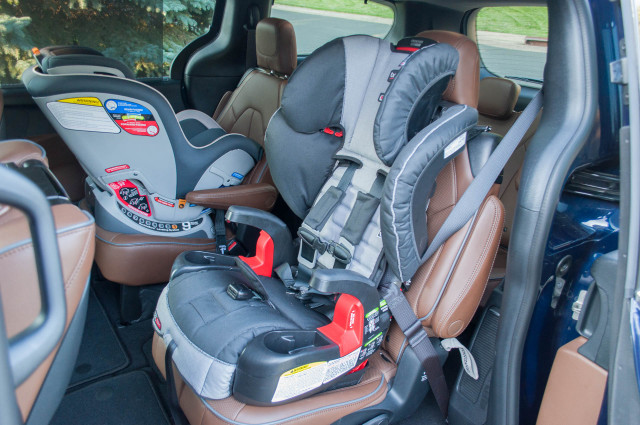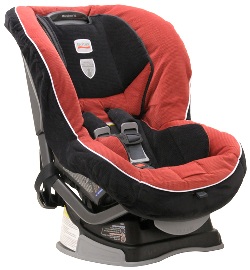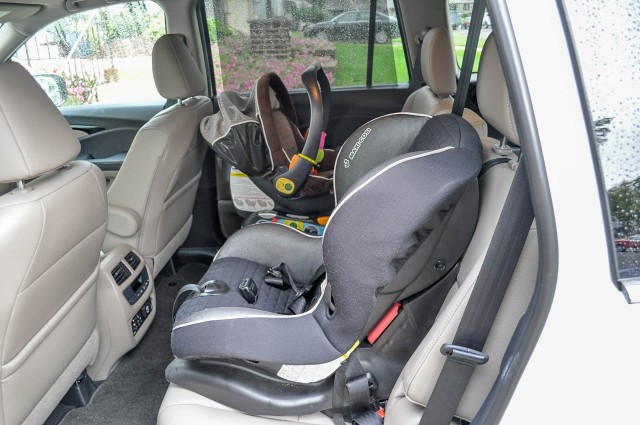Yes, car seats expire and here’s why
We hear it all the time: “Car seats don’t actually expire. That’s just a ploy by the manufacturers to get you to spend more money and buy new stuff.”
It doesn’t matter how many times we hear it; it’s still not true. Car seats expire, and your kid’s safety could depend on you recognizing that fact.
We trust car seats to keep our little ones safe in a crash, and in turn, we must be vigilant in taking care of them and replacing them when it’s time. The promise made by the former heavily depends on our comprehension of the latter.
And it’s relatively easy to see why.

Car seat label – on NHTSA website
History lesson
“Why, back in my day, we rode home from the hospital on mom’s lap while dad manned the three-on-the-tree, and there were no seatbelts, and we all survived. Up hill. Both ways. Through a blizzard.”
Sure, but gas was $0.50 per gallon and Cadillac’s were the standard of the world with tail fins. Things change.
If we look back 30 years ago, infant car carriers weren’t widely available. The LATCH system didn’t exist. Car seats certainly didn’t have sippy cup holders either, and the ability to adjust the base to better fit various seat angles, forget about it.
As time progresses innovation happens. We are able to take data from research and implement technology to better protect children.
According to the IIHS, the number of infants killed in car crashes since 1975 has plummeted 77 percent, and the number of children under 3 killed in car crashes has similarly dropped by 75 percent. Both of those declines are despite a 20-percent increase in the number of children age 3 and under riding in cars over the same time period.
That’s an especially promising statistic bolstered further by researchers at the National Institutes of Health who concluded that effective use of a child restraint can cut down on fatal injuries by 70 to 80 percent.
In 2018 35% of children killed in car crashes were unrestrained according to the NHTSA.
As a result, car seats today have more technology and features built into them than one would think necessary—or even realize. From side-impact protection to spring-loaded whiplash protection to LATCH, countless hours of research and development has been poured into better protecting our young ones and and the numbers tell the tale.

2017 Chrysler Pacifica long-term road test
Car seats expire
Yes, car seats typically expire after six years from the date of manufacture, though that can vary depending on manufacture and car seat. A sticker on the car seat provides the serial number includes manufacture and expiration dates, check yours and make a note for when the time will come.
Of course, the seats don’t dissolve on the expiration date at the stroke of midnight. Rather, you should plan on replacing them at or around the expiration date.
But why do car seats expire? There’s no single reason.

2017 Chrysler Pacifica long-term road test
From technology and design updates to simple wear and tear, there are plenty of reasons from which to pick why it’s time to trash the kid’s car seats and buy new ones.
For starters, look at any car seat that is about six years old. Notice how different the design is and how it works when compared to new, on-the-shelf models? Crash test data, updated safety standards, advances in materials, manufacturing, and design all allow for cars seats with improved functionality and safety.
Innovations today in safety such as Britax’s SafeCell impact protection, an integrated safety system that is claimed to test beyond federal standards, or ClickTight, which is an easy installation method that help ensure a tight, secure fit of the car seat, will help shape car seats in the future. Even the foam in certain car seats is now specially designed to absorb energy upon a car crash.

Convertible car seats – Britax Marathon 70
Even more than feature upgrades, car seats even decay on their own.
Car seats are mainly made of plastic with metal bits (high-end models feature steel frames) in key areas and fabric covering the seating area. Car seats typically live inside cars, and depending where you live temperatures inside your vehicle can range from 50 below zero to 140 degrees. Through these extreme temperature changes the car seat sits and endures and these climate fluctuations—and time—take a toll on the plastics.
“Expiration dates are a combination of technology, the latest standards, and product integrity. Adhering to them might actually make it easier for the parent to get it right, which ultimately makes our kids safer,” said Jennifer Stockburger, director of operations at the Consumer Reports’ auto test center.

2016 Honda Pilot Touring long-term road test
Simplifying it
Not convinced?
Let’s experiment: Buy a plastic lawn chair. Leave it outside for six years, year-round, through extreme winter and summer, blasting sunlight and cold darkness. Let your kids jump in and out of them daily, and maybe even spill liquid on them for good measure (warm milk would be a nice touch).
After six or seven years chances are that plastic chair is pretty brittle and it’s either cracked or broken. Car seats are more durable, but they are still made from plastic (with some metal) bits that age.
Still not convinced? Remember that car seats aren’t the only thing that protects your child and has an expiration date. Bike helmets have expiration dates with the same logic behind them. While life jackets don’t have an expiration date they should be inspected regularly for wear and tear, and the same thing goes for car seats.
Consider the above, then decide if scraping a few hundred dollars (and that’s if you buy a top-of-the-line car seat) is worth it when discussing your kid’s safety.

